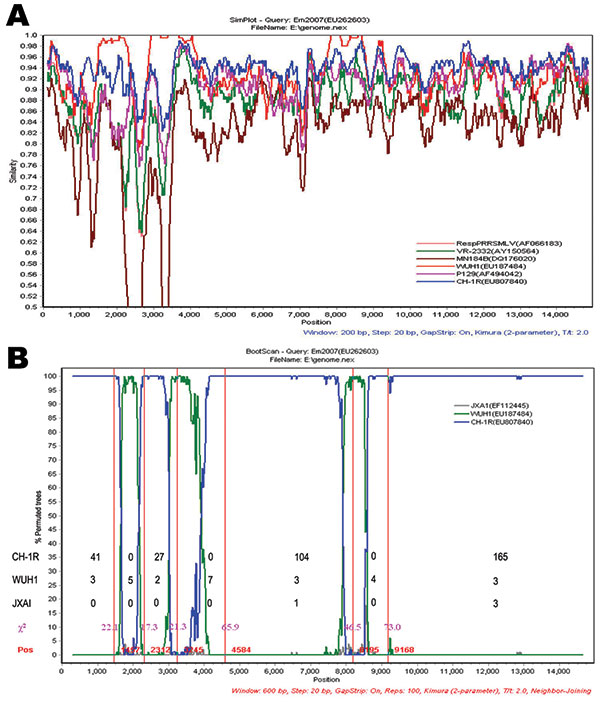Volume 15, Number 12—December 2009
Dispatch
Recombination in Vaccine and Circulating Strains of Porcine Reproductive and Respiratory Syndrome Viruses
Figure 1

Figure 1. Recombination event analyses of the Em2007 strain of porcine reproductive and respiratory syndrome virus (PRRSV). A) Similarity plot analysis using Em2007 as query sequence. Analysis made use of a sliding window of 200 bases and a step size of 20 bases. The y-axis shows the percentage similarity between the selected PRRSV sequences and the query sequence. The other comparisons are not shown for clarity. B) Bootscan analysis using Em2007 as the query sequence. JXA1 is used as the outgroup to determine the breakpoints. The y-axis shows the percentage of permutated trees using a sliding window of 600 bases and a step size of 20 bases. Red vertical lines and numbers indicate the recombination breakpoints identified by the Genetic Algorithm for Recombination Detection (GARD). Pink numbers indicate the maximal χ2 value of each breakpoint. Numbers corresponding to CH-1R, WUH1, and JXA1 indicate the quantity of informative sites in 7 zones defined by 6 recombination breakpoints, respectively.